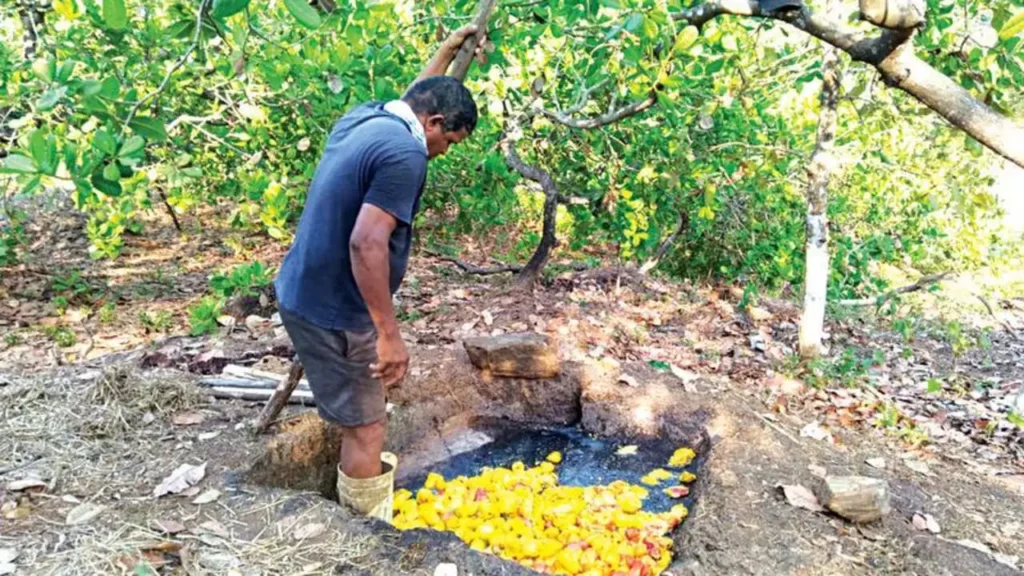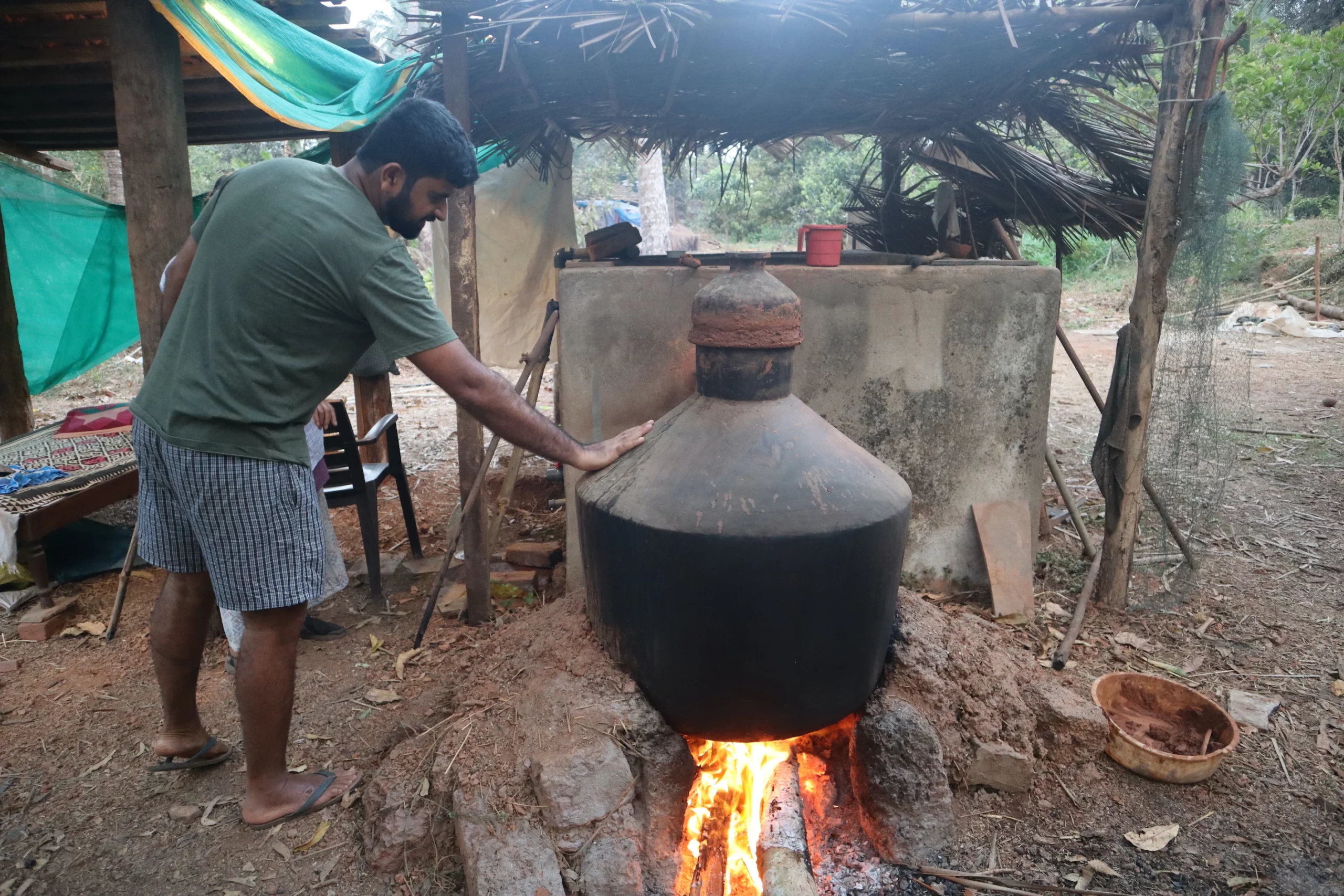
Goa’s vibrant culture thrives on its rich traditions, and this drink stands out as one of its most iconic spirits. This strong, aromatic liquor, distilled from cashew apples or coconut sap, embodies Goa’s heritage. Unlike mass-produced alcohol, feni remains a craft spirit, created using age-old techniques passed down through generations. More than just a drink, it symbolizes Goa’s essence, carrying the region’s history and character in every sip.
A Legacy Rooted in History
Feni’s origins trace back over 400 years to the Portuguese era, when they introduced cashew trees to Goa in the 16th century. Locals quickly experimented with fermenting and distilling cashew apples, eventually developing the unique process of making cashew feni. Meanwhile, coconut feni, which predates Portuguese rule, continued to thrive in Goan villages. Over time, Goans incorporated feni into celebrations, rituals, and even traditional remedies, making it an essential part of their daily lives.
Cashew vs. Coconut Feni: Two Distinct Spirits
Goans produce two main types of feni, each offering unique flavors and cultural significance:
- Cashew Feni – Distillers create this variety by fermenting and distilling cashew apples. It delivers a fruity, pungent aroma with a rich, full-bodied taste and tropical sweetness.
- Coconut Feni – Tappers extract the sap from coconut palm trees and ferment it before distillation. This variety offers a smoother, milder taste with earthy undertones, making it especially popular in South Goa.
How Goans Make Cashew Feni
Goan distillers craft feni in the countryside, where small-scale producers, known as bhatkars, follow meticulous processes using time-honored techniques.
1. Harvesting Cashew Apples
Farmers begin collecting fully ripened cashew apples in February, continuing until May. They hand-pick fallen fruits, selecting only the best, unbruised ones for fermentation.
2. Extracting the Juice (Nudging the Niro)
After gathering the cashew apples, workers transport them to a rock-cut basin called a colmbi. There, they crush the fruit underfoot, releasing the juice known as niro. The juice then ferments in clay or wooden pots for 3–4 days, allowing natural yeasts to convert sugars into alcohol.
3. Distilling in a Bhatti
Once fermentation completes, distillers transfer the liquid to a traditional distillation unit called a bhatti. They heat the fermented juice over a wood fire, collecting the alcohol-rich vapors through condensation.
- The first distillate, urrak, contains a lower alcohol content and serves as a light, seasonal drink.
- The second distillation refines urrak into feni, which reaches an alcohol content of 40-45%.
- Some distillers opt for a third distillation to produce a stronger version, but most consider the second distillate the most authentic.
The Traditional Process of Making Coconut Feni
Tappers climb coconut palms to collect neera, the fresh sap from coconut flowers. They leave it to ferment naturally for a day before distilling it in a bhatti. This process results in a smooth, subtly flavored feni with mild, nutty notes.
Feni’s Role in Goan Culture
Goans consider feni more than just a drink—it represents their identity. Families serve this drink at festivals, religious ceremonies, and gatherings. Many locals also believe in its medicinal properties, using it to treat colds, aid digestion, and even disinfect wounds.
Goans enjoy urrak (the first distillate) mixed with limca, lime, and salt, while this drink is best consumed neat or with a splash of water to enhance its complex flavors.
Feni’s Global Recognition
In 2009, Goan Cashew Feni earned a Geographical Indication (GI) tag, protecting its authenticity and ensuring that only Goa can produce it. Unlike commercial liquors, this drink contains no artificial flavors, preservatives, or industrial additives—a completely natural craft spirit unchanged for centuries.
Today, this drink is gaining popularity beyond Goa. Bartenders now experiment with feni-based cocktails, introducing this traditional drink to global connoisseurs.
Preserving Goa’s Tradition
Despite modernization, many Goan families continue to produce feni using age-old techniques, ensuring this heritage drink does not fade into obscurity. Several distillers now offer tasting tours, allowing visitors to experience the history and craftsmanship behind this legendary spirit.
Conclusion: A Spirit with a Soul
Feni captures the spirit of Goa, connecting generations through its craftsmanship. From hardworking cashew farmers and toddy tappers to the skilled bhatkars who distill it, feni reflects Goan resilience and tradition. Whether enjoyed in a village tavern or a trendy cocktail bar, This drink remains Goa’s most treasured artisanal drink, preserving its legacy one sip at a time.


